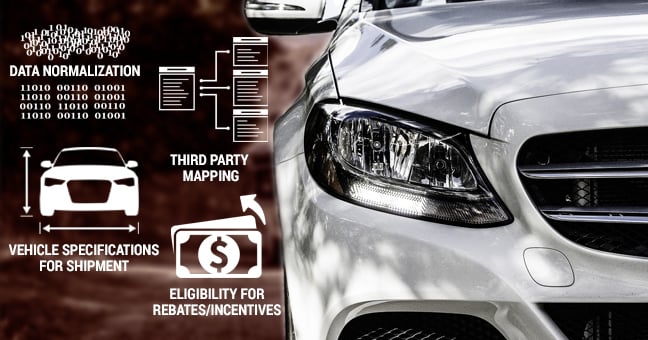Vehicle data and VIN decoding solutions are widely used across the automotive industry and are the foundation for many businesses. Some of the more common use cases are basic vehicle identification (year, make, model, trim, etc.) or VIN explosion, as covered in the preceding article. However, there are some less obvious uses for vehicle data/VIN decoding that may come as a surprise to you, such as the following:
1. Normalizing/Cleansing/Enhancing an Existing Database
Raw data isn’t always the easiest to work with, especially when dealing with several different OEMs all using different marketing terminology. While many businesses leveraging VIN explosion services find value in normalized data, not many businesses are familiar with it. For those not familiar, data normalization is the process of taking complex data from multiple data sources (multiple OEMs) and boiling it down to a language that can easily be understood. For example, multiple OEMs might have a unique name for their lane-keeping technology while they all function similarly. In this case, the normalized name might just be “Lane Keeping Assist.”
In addition to data normalization, many businesses, including large dealerships or fleets, with an extensive vehicle database will find value in bulk decoding these VINs to cleanse that data. This might be filling in missing gaps, improving data accuracy, normalizing the data, and even enhancing the data with additional data points beyond their database’s coverage.
2. To create a bridge between other datasets (3rd party mapping)
A commercial vehicle data solution will offer extensive data coverage, including very detailed vehicle specifications that you may not expect, such as interior shoulder and legroom or vehicle width without mirrors. However, there may be other datasets that are valuable to your business, such as parts data or valuation data, that will need to be obtained from a third party. Some vehicle data providers, including DataOne, will offer mapping to these data standards, including ACES, Kelly Blue Book Values, J.D. Power Used Car Guide, etc. that is tied back to the VIN. This takes a lot of the manual work out of connecting disparate data sources into one system.
3. Determine Eligibility of Rebate/Incentive programs
As the auto industry continues to make a push for electric vehicles to meet the increasingly more demanding fuel economy requirements mandated by the government, exponentially more vehicle buyers will qualify for certain rebates/incentives. Companies offering these rebates and incentives need an efficient way to identify which vehicles are eligible for their programs. With a comprehensive VIN database, plug-in hybrid and alternative fuel vehicles can easily be determined by VIN number.
4. Vehicle specifications for shipping
Although probably not surprising for most transportation/logistics businesses, leveraging a VIN database to identify certain vehicle measurements (length, width, and height) and weights (gross vehicle weight, curb weight, etc.) is certainly not as obvious to the average automotive data consumer. This data requires a remarkably high degree of accuracy, as inaccuracy can end up costing these shipping businesses through fines or shipping delays when they have strict deadlines to meet.
Regardless of how unique your business use case may be, you will likely need some level of vehicle data and VIN decoding to help to support and scale your product(s). DataOne would be happy to discuss how our data can help your business.

